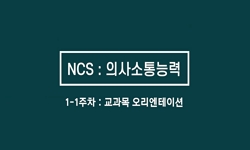In the foreign language teaching, cultural competence is one of the sub-competence of communicative competence. Therefore, the 7th high school curriculum, provided by the Korean Ministry of Education, emphasizes the need of learning and teaching cultu...
http://chineseinput.net/에서 pinyin(병음)방식으로 중국어를 변환할 수 있습니다.
변환된 중국어를 복사하여 사용하시면 됩니다.
- 中文 을 입력하시려면 zhongwen을 입력하시고 space를누르시면됩니다.
- 北京 을 입력하시려면 beijing을 입력하시고 space를 누르시면 됩니다.

대학수학능력시험 스페인어과 문화관련 문항 분석 = Analysis of the Questions about Hispanic Culture in the Spanish Section of the CSAT
한글로보기https://www.riss.kr/link?id=A99870784
- 저자
- 발행기관
- 학술지명
- 권호사항
-
발행연도
2013
-
작성언어
Korean
- 주제어
-
등재정보
KCI등재후보
-
자료형태
학술저널
-
수록면
1-27(27쪽)
-
KCI 피인용횟수
2
- DOI식별코드
- 제공처
-
0
상세조회 -
0
다운로드
부가정보
다국어 초록 (Multilingual Abstract)
In the foreign language teaching, cultural competence is one of the sub-competence of communicative competence. Therefore, the 7th high school curriculum, provided by the Korean Ministry of Education, emphasizes the need of learning and teaching culture in a social and daily context. Because the foreign language students master the target language, contextualize the sociocultural informations and, finally, get a unified view of language and culture on the basis of the knowledge. However, the questions about Hispanic culture in CSAT(College Scholastic Ability Test) are not proper to this principle in many cases because there are some questions that can not be considered appropriate to test what students know about Hispanic culture. In addition, most of the questions about Hispanic culture can be solved if they understand the text; it means that the subject of the Spanish language in the CSAT requires not cultural competence of the students but linguistic competence. Therefore, it is very important to establish a criterion for the cultural contents of the Spanish language subject in the CSAT and for the teaching of Spanish as a foreign language, as the CEFR(Common European Framework of Reference for Languages) and the CPCI(Curricular Plan of Cervantes Institute) are now doing.
참고문헌 (Reference)
1 Canale, Michael, "Theoretical bases of communicative approaches to second language teaching and testing" 1 : 1-47, 1980
2 Byram, Michael, "Teaching and Assessing Intercultural Communicative Competence" Multilingual Matters 1997
3 Hymes, Dell, "On communicative competence, In Sociolinguistics: selected readings" Penguin 269-293, 1972
4 Consejo de Europa, "Marco común europeo de referencia para las lenguas: aprendizaje, enseñanza, evaluación. Versión en español" Ministerio de Educación, Culturay Deporte
5 Poyatos, Fernando, "La comunicación no verbal I, II" Istmo 1994
6 Canale, Michael, "From communicative competenceto communicative language pedagogy, In Language and communication" Longman 2-27, 1983
7 Miquel, Lourdes, "El componente cultural : un ingrediente más en las clases de lengua" 9 : 15-27, 1992
8 Miquel, Lourdes, "El choque intercultural : reflexiones y recursos para el trabajo en el aula" 45 : 27-46, 1999
9 Bermejo Alonso, Sergio, "El aula de ELE: una cultura constructiva. Nuestra percepcióon del otro" XII Encuentro Práctico de Profesores de ELE
10 Kramch, Claire, "Context and Culture in Language Teaching" Oxford University Press 1993
1 Canale, Michael, "Theoretical bases of communicative approaches to second language teaching and testing" 1 : 1-47, 1980
2 Byram, Michael, "Teaching and Assessing Intercultural Communicative Competence" Multilingual Matters 1997
3 Hymes, Dell, "On communicative competence, In Sociolinguistics: selected readings" Penguin 269-293, 1972
4 Consejo de Europa, "Marco común europeo de referencia para las lenguas: aprendizaje, enseñanza, evaluación. Versión en español" Ministerio de Educación, Culturay Deporte
5 Poyatos, Fernando, "La comunicación no verbal I, II" Istmo 1994
6 Canale, Michael, "From communicative competenceto communicative language pedagogy, In Language and communication" Longman 2-27, 1983
7 Miquel, Lourdes, "El componente cultural : un ingrediente más en las clases de lengua" 9 : 15-27, 1992
8 Miquel, Lourdes, "El choque intercultural : reflexiones y recursos para el trabajo en el aula" 45 : 27-46, 1999
9 Bermejo Alonso, Sergio, "El aula de ELE: una cultura constructiva. Nuestra percepcióon del otro" XII Encuentro Práctico de Profesores de ELE
10 Kramch, Claire, "Context and Culture in Language Teaching" Oxford University Press 1993
11 Pilleux, Mauricio, "Competencia comunicativa y análisis del discurso" 36 : 143-152, 2001
동일학술지(권/호) 다른 논문
-
- 고려대학교 스페인·라틴아메리카연구소
- 우석균 ( Suk Kyun Woo )
- 2013
- KCI등재후보
-
- 고려대학교 스페인·라틴아메리카연구소
- 박병규 ( Byong Kyu Park )
- 2013
- KCI등재후보
-
스페인어 동화현상에 관한 고찰: 스페인어 모어 화자의 동화현상이 한국어에 전이되는 경우를 중심으로
- 고려대학교 스페인·라틴아메리카연구소
- 김원필 ( Won Pil Kim )
- 2013
- KCI등재후보
-
- 고려대학교 스페인·라틴아메리카연구소
- 신태식 ( Tae Shig Shin )
- 2013
- KCI등재후보
분석정보
인용정보 인용지수 설명보기
학술지 이력
| 연월일 | 이력구분 | 이력상세 | 등재구분 |
|---|---|---|---|
| 2026 | 평가예정 | 재인증평가 신청대상 (재인증) | |
| 2020-01-01 | 평가 | 등재학술지 유지 (재인증) |  |
| 2017-01-01 | 평가 | 등재학술지 유지 (계속평가) |  |
| 2014-01-01 | 평가 | 등재학술지 선정 (계속평가) |  |
| 2013-01-01 | 평가 | 등재후보 1차 PASS (등재후보1차) |  |
| 2011-01-01 | 평가 | 등재후보학술지 선정 (신규평가) |  |
학술지 인용정보
| 기준연도 | WOS-KCI 통합IF(2년) | KCIF(2년) | KCIF(3년) |
|---|---|---|---|
| 2016 | 0.29 | 0.29 | 0.24 |
| KCIF(4년) | KCIF(5년) | 중심성지수(3년) | 즉시성지수 |
| 0.18 | 0.16 | 0.519 | 0 |




 KCI
KCI KISS
KISS






